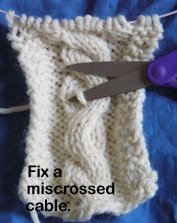.
I am sure this activity was about working together to make things better for the planet.
I think maybe the specifc goal was to keep the green balls in the air. But I don't know. This kind of interactivity vastly different from museum practice from 60-80 years ago!
Wandering on. Bark cloth.
The info says it took three skilled crafts people to make this adze. One to make the blade, one to make the handle, and one to do the binding.
I wonder if a fourth person made the cord with which the binding was
done, or if the binder also made the cord. I wonder what the cord is
made from, too. It's very fine and regular.
This boat in the same section. I'd never seen a boat anything like this -- the inlay, and the fringe on top.....
Wandering on. Looking across the enormous hall to the other side. I believe this totem pole is from the Pacific Northwest, but am not sure.
Wandering into the gold-jewelry section. This bird is from Colombia, and was made between 300 and 1500 CE. The info just says "ornament" -- I wonder what it ornamented....
We learned something about fibulae in the class I took on Hadrian's Wall. One of the things we learned was that a crossbow shape was popular the whole time the Romans were in Britain.
This one is described as Etruscan, 7th-5th centuries BCE.
Their tools *can't* have been primitve, to do this minute, detailed work. This is not over 3" in length.
Another fibula. We saw some in class that had this coiled-spring pin design. This one is quite small. I'd guess the whole thing is no more than 1.5" long. Boggled by the fine-ness of the decoration. So tiny........
And now for something completely different. Want to guess where this is from?
It looks very southwest-USA to me. But no. It's Chinese! I guess I might never have seen anything this old that is Chinese. It's from the Banshan phase of the Majiayao period -- 2600-2300 BCE.
The next many things are Chinese.
One of a pair of fruit bowls. Nephrite. Qing period, 1644-1911 CE.
I believe all they have is the sherd for this vessel, and someone reconstructed the rest of it. You can see at least part of the crack separating the sherd from the rest of the vessel. Another interesting job -- trying to recreate the shape of a pot from only one smallish piece? Tricky.
It's described as "Eggshell-thin black ware sherd. Shandong Longshan period, 2600-1900 BCE." This was pretty small -- less than 5" tall, I think.
I'd been wondering why it was so dark in the special Chinese exhibit -- stone and ceramic are not going to be harmed by light (though, I suppose, pigment on the ceramics might be -- like that first pot I showed you).
Here's why. Painted wood.
Tomb figurine. Eastern Zhou period. 770-256 BCE.
I'm always interested by how very little it takes to unmistakably depict a human face......
Tomb figure. Probably 3rd-4th century CE.
Tomb figure. Tang Dynasty. 618-906 CE. (My better half says "And we call him 'Snuggles'.")
"Figure of Wei Tuo. Wood, laquer. 17th-18th century CE." Qing dynasty -- 1644-1911. A Chinese Bhodhisattva (guardian of the teachings of the Buddha).
These are the faces on the big banners on the front of the Field Museum at present.
It says "Performers in Chinese operas or plays would apply elaborate stage makeup to portray certain roles, following character guides like these."
More reasons for low light in this exhibit. A child's tiger shoes and quilted jacket. Our daughter had a pair of tiger shoes, when she was little.
Teapot. Pewter, Yixing clay, jade. 1820-1830 CE.
This is a little thing. It would sit comfortably in your open hand. I wonder what the Xixing clay was used for. And I wonder about using pewter for a teapot -- pewter is partly lead........
Tea bowl. Southern Song dynasty. 1127-1279 CE. Jiangxi province, Jizhou kilns.
And at this point, tired and visually overloaded, I headed back to the hotel.
.
Subscribe to:
Post Comments (Atom)









































No comments:
Post a Comment